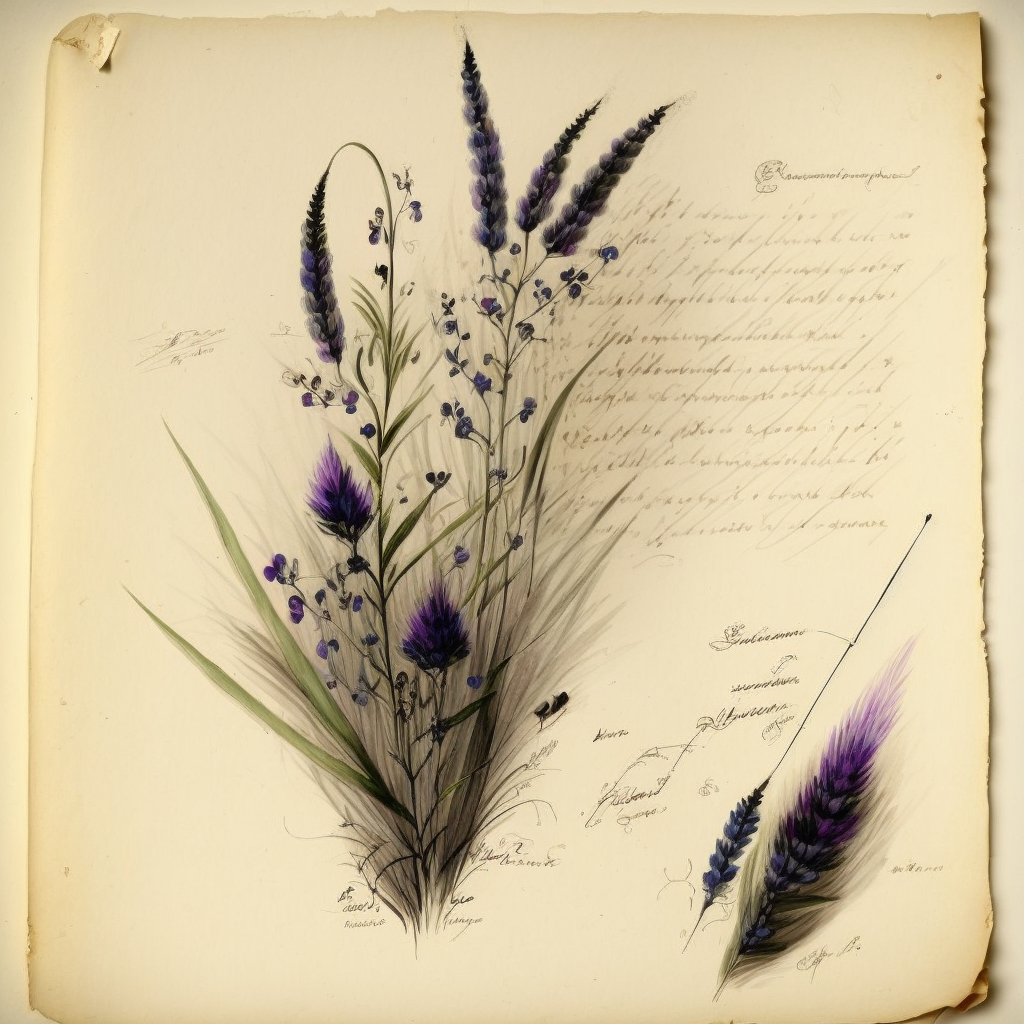Black Muhly
This long grassy perennial is found along the banks of the Lost Lake almost exclusively. While it has little medicinal or industrial use, it is a hearty plant and does a great deal to filter the air, leading to its shift in hue over the years. While some have sought to transplant it in an attempt to cultivate it for its aesthetic appearance, the plant is very difficult to care for due to the nature of the mutations that have occured to the strain over the years and its need for heavily salinated soil and cold temperatures.
Basic Information
Anatomy
This is a long, grassy plant that grows in clumps and has aerial flowers at the end of long stalks. It has a thick, hearty rootstock and a singular long taproot in the center of it that grows up to half a meter deep.
Biological Traits
The grass grows in communal clumps and appears very bush-like. The flowers where they culminate at the tops of the plant add an additional, feathery, billowous appearance. The base of the plant contains a number of grey-black leaves that trail the ground which give rise to lighter colored stalks of grassy, folded blades that terminate in the flowers at the tops when in season.
Ecology and Habitats
This plant only thrives in heavily salinated soil and requires cold temperatures.
Additional Information
Geographic Origin and Distribution
This strain is only found around the banks of Lost Lake
Symbiotic and Parasitic organisms
During the month of Senectus, the flowering plants attract a large number of black ladybugs. The small beetles are harmless, but dark hued and many completely devoid of the spots that at one time had made them so noticable.
Scientific Name
Plant
Origin/Ancestry
Muhlenbergia capillaris
Lifespan
Bloom duration is 6-8 weeks during Senectus
Average Height
30 - 90 cm
Average Length
15 - 35 cm
Geographic Distribution





Comments